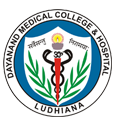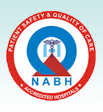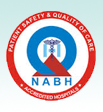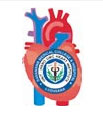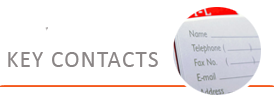Echocardiography
Echocardiography uses standard two-dimensional, three-dimensional, Doppler ultrasound to create images of the heart. Echocardiography has become routinely used in the diagnosis, management, and follow-up of patients with any suspected or known heart diseases. It is one of the most widely used diagnostic tests in cardiology. It can provide a wealth of helpful information, including the size and shape of the heart (internal chamber size quantification), pumping capacity, and the location and extent of any tissue damage. An echocardiogram can also estimates of heart function, such as a calculation of the cardiac output, ejection fraction, and diastolic function
Indications:
- Valvular heart disease
- Ischemic heart disease
- Congenital (birth defects)
- Pericardial diseases
- Cardiac masses (tumours)
Types of Echocardiography procedures
1) Transthoracic echocardiogram
A echocardiogram is also known as a transthoracic echocardiogram, or cardiac ultrasound. In this case, the echocardiography transducer (or probe) is placed on the chest wall (or thorax) of the subject, and images are taken through the chest wall. This is a non-invasive, highly accurate, and quick assessment of the overall health of the heart.
Before the test:
There is no special preparation for the TTE.
During a TTE
- During a TTE, you will lie on back or on left side on a bed or table.
- Small metal discs (electrodes) will be taped to arms and legs to record your heart rate during the test.
- A small amount of gel will be rubbed on the left side of chest to help pick up the sound waves.
- The transducer is pressed firmly against chest and moved slowly back and forth.
- The echoes from the transducer are sent to a video monitor that records pictures of heart for later viewing and evaluation.
- The room is usually darkened to help the technician see the pictures on the monitor.
- At times technician will be asked to hold very still, breathe in and out very slowly, hold your breath, or lie on your left side.
- The technician will move the transducer to different areas on chest that provides specific views of your heart.
- The test usually takes from 30 to 60 minutes.
After the test:
When the test is over, the gel is wiped off and the electrodes are removed.
2) Transesophageal echocardiogram
This is an alternative way to perform an echocardiogram. A specialized probe containing an ultrasound transducer at its tip is passed into the patient's esophagus. This allows image and Doppler evaluation from a location directly behind the heart. This is known as a transesophageal echocardiogram. Conscious sedation and/or localized numbing medication may be used to make the patient more comfortable during the procedure.
Before the procedure:
He or she may ask you not to have alcoholic drinks for a few days before the test, and not to eat or drink anything for at least 4 to 6 hours before TEE.
During the test:
Specially trained doctors perform TEE. It’s usually done in a hospital or a clinic and lasts 30 to 60 minutes.
- A technician sprays in throat with a medicine to numb it and suppress the gag reflex. Patient lie on a table.
- A nurse puts an IV (intravenous line) in your arm, and gives a mild sedative (medicine) to help stay calm.
- The technician then places small metal disks (electrodes) on chest. He or she attaches the electrodes by wires to a machine that will record electrocardiogram (ECG) to track your heartbeat.
- The doctor then gently guides a thin, flexible tube (probe) through your mouth and down throat, and asks patient to swallow as it goes down.
- A transducer on the end of the probe sends sound waves to heart and collects the echoes that bounce back. These echoes become pictures that show up on a video screen. This part of the test takes 10 to 15 minutes.
- When the doctor is finished taking pictures, the probe, IV and electrodes are removed and nurses watch you until you are fully awake. Then you can usually get up, get dressed and leave the clinic or hospital.
After the procedure:
- Patient may have a little trouble swallowing right after the test, but this will go away within a few hours.
- It’s common to have a sore throat for a day or two after the test.
3) Stress echocardiography
A stress echocardiogram, also known as a stress echo, uses ultrasound imaging of the heart to assess the wall motion in response to physical stress. First, images of the heart are taken "at rest" to acquire a baseline of the patient's wall motion at a resting heart rate.
Before the test:
- Make sure not to eat or drink anything for three to four hours before the test.
- Don’t smoke on the day of the test because nicotine can interfere with your heart rate.
- Don’t drink coffee or take any medications that contain caffeine without checking with your doctor.
- If patient take medications, ask the doctor whether you should take them on the day of the test. Patient shouldn’t take certain heart medications, such as beta-blockers, isosorbide-dinitrate, isosorbide-mononitrate (Isordil Titradose), nitroglycerin before the test.
- Wear comfortable, loose-fitting clothes. Because of exercise, make sure to wear good walking or running shoes.
During the procedure:
Resting echocardiography
Doctor needs to see how your heart functions while you’re at rest to get an accurate idea of how it’s working. Doctor begins by placing 10 small, sticky patches called electrodes on your chest. The electrodes connect to an electrocardiograph (ECG).
The ECG measures heart’s electrical activity, especially the rate and regularity of the heartbeats. Blood pressure taken throughout the test as well. Next, Patient lie on bed, and doctor will do a resting echocardiogram, or ultrasound, of your heart. They’ll apply a special gel to your skin and then use a device called a transducer.
This device emits sound waves to create images of your heart’s movement and internal structures.
Then injection dobutamine stress echo done. Technician will be weighed to calculate the appropriate dose of Dobutamine. Next a small intravenous line will be inserted by a nurse. You will be required to lie on your left side for the remainder of the test. You will also be connected to an ECG machine for the duration of the test.
Technician will then be given an intravenous infusion of Dobutamine and the medication will be increased every 3 minutes. At certain intervals more images of heart will be acquired.
If some tingling sensations in face as a result of the medication. Cardiologist will be present throughout this part of the test and check blood pressure, heart rate and symptoms will be constantly monitored.
When your heart rate has increased sufficiently or at the cardiologist’s discretion, the Dobutamine infusion will be ceased. The cardiologist will compare the resting images of your heart with those taken at each interval.
4) Intravascular ultrasound
Intravascular ultrasound (IVUS) is a specialized form of echocardiography that uses a catheter to insert the ultrasound probe inside blood vessels. This is commonly used to measure the size of blood vessels and to measure the internal diameter of the blood vessel. For example, this can be used in a coronary angiogram to assess the narrowing of the coronary artery.
5) Strain rate imaging (deformation echocardiography)
Strain rate imaging is an ultrasound method for imaging regional differences in contraction (dyssynergy) in for instance iscemic heart disease or dyssynchrony due to Bundle branch block. Strain rate imaging measures either regional systolic deformation (strain) or the rate of regional deformation (strain rate). The methods used are either tissue Doppler or Speckle tracking echocardiography.
6) Three-dimensional echocardiography
3D imaging is the visualization of cardiac valves and congenital abnormalities, providing guidance of interventions for structural heart disease.
7) Contrast echocardiography
The most commonly used application is in the enhancement of LV endocardial borders for assessment of global and regional systolic function. Contrast may also be used to enhance visualization of wall thickening during stress echocardiography, for the assessment of LV thrombus, or for the assessment of other masses in the heart. Contrast echocardiography has also been used to assess blood perfusion throughout myocardium in the case of coronary artery disease.

